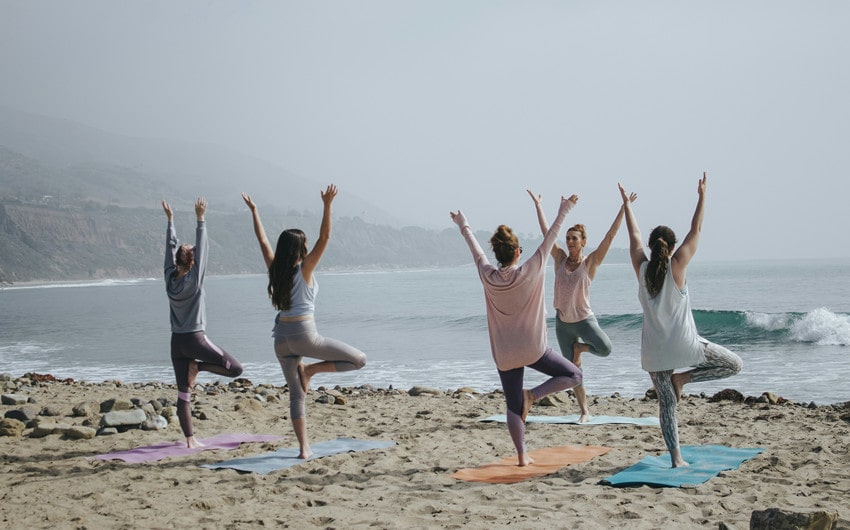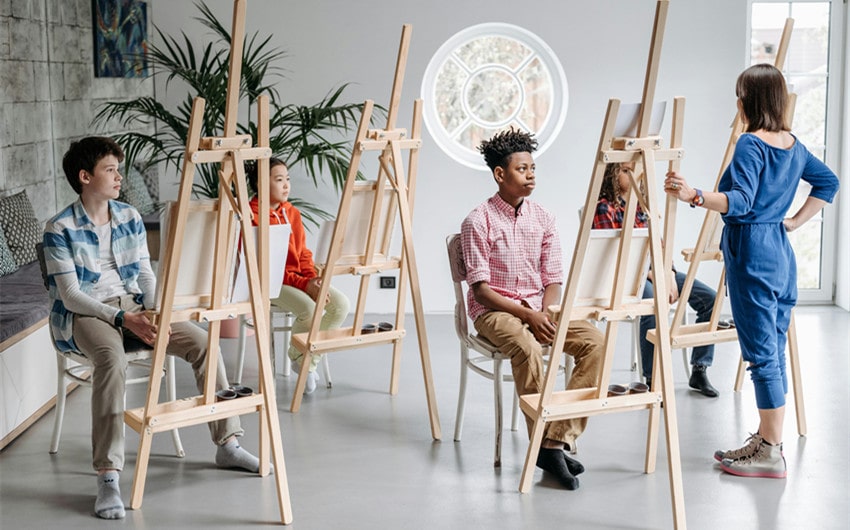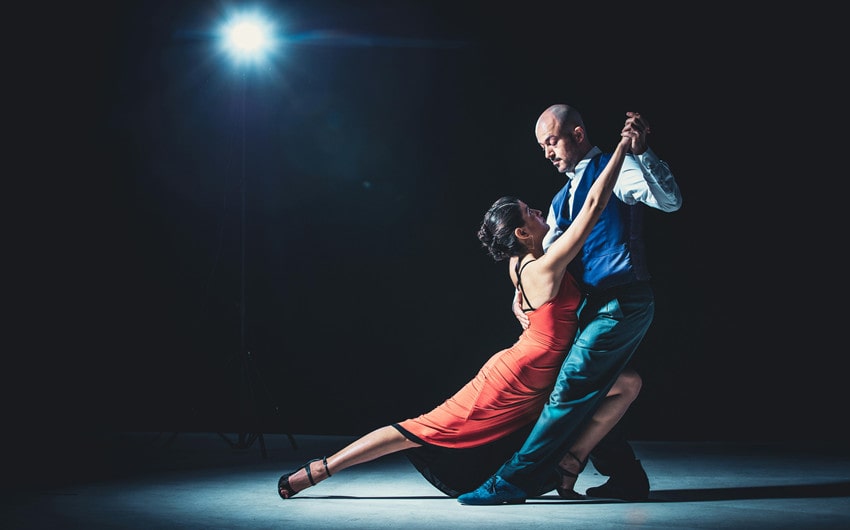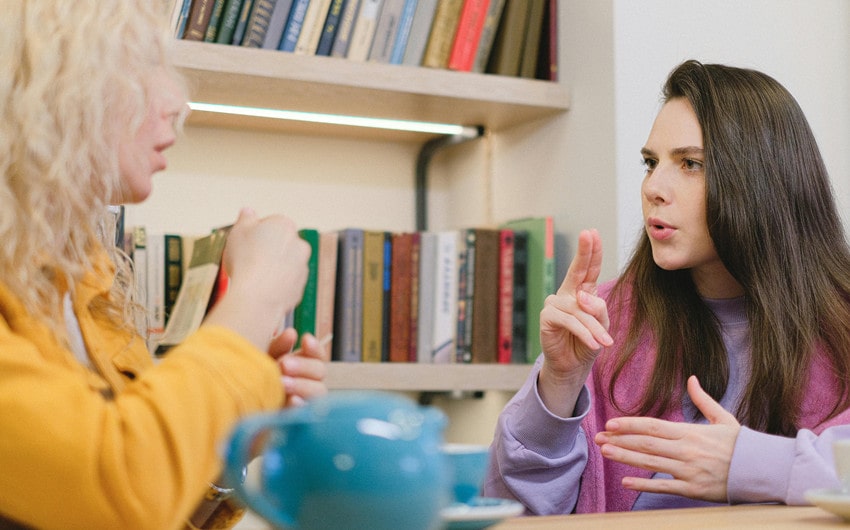70 Best Hobbies to Make Friends and Boost Your Social Life
Making new friends as an adult can be challenging, but finding shared interests can make it easier. Engaging in hobbies is a fantastic way to connect with others who have similar passions. Whether you enjoy being active, creative, or just having fun, there are plenty of activities that can help you build meaningful relationships.
In this article, we explore the best hobbies to make friends, offering a variety of options to suit different tastes and lifestyles. Dive in to discover exciting ways to expand your social circle and enjoy your free time!
Hobbies in Team Sports
1. Soccer

Soccer involves participating in games and leagues, offering an engaging way to build camaraderie and improve physical fitness. Players work together, passing and strategizing to score goals, which fosters a strong sense of teamwork and collaboration.
The benefits of playing soccer extend beyond the physical; it enhances cardiovascular health, agility, and endurance while also improving mental sharpness through strategic play. Soccer is one of the most popular sports worldwide, making it easy to find local leagues and pick-up games.
This global popularity means that wherever you go, you can find a community of soccer enthusiasts ready to welcome new players. The sport requires communication and coordination, helping you quickly bond with teammates as you work together to win matches and enjoy the game.
2. Basketball
Basketball involves playing in local leagues or pick-up games, encouraging teamwork, keeping you active, and offering competitive fun. This sport requires players to collaborate closely, whether it’s setting up plays, defending, or scoring, which naturally builds strong connections among teammates.
The benefits of basketball are numerous; it boosts cardiovascular fitness, improves coordination, and enhances agility. The fast-paced and exciting nature of basketball makes it a fantastic way to meet new people while getting a great workout.
The need for frequent interaction, from passing the ball to communicating strategies, helps form connections with fellow players. Basketball’s dynamic environment fosters quick bonding and camaraderie, making it an excellent choice for those looking to expand their social circle.
3. Tennis
Tennis involves participating in singles or doubles matches, often through local clubs or leagues. This sport promotes physical fitness, hand-eye coordination, and strategic thinking. The benefits of playing tennis include improved cardiovascular health, increased muscle strength, and enhanced agility.
Tennis clubs and leagues create a social and competitive environment where participants can connect over shared interests and challenges. The one-on-one or partner nature of tennis encourages close interaction and communication, helping players build strong connections and friendships. The shared enjoyment of the game and the opportunity to compete or practice regularly foster a sense of camaraderie and lasting relationships.
4. Softball
Softball involves playing in local leagues or casual games, promoting teamwork and keeping you active. The slower pace of the game compared to other sports allows for more social interaction and relaxed conversations, making it an ideal setting for building friendships. The benefits of playing softball include improved hand-eye coordination, cardiovascular health, and muscle strength.
Softball combines the fun of a team sport with a relaxed, social atmosphere. It’s perfect for those who enjoy outdoor activities and want to meet people in a less competitive setting. The sport’s slower pace allows for plenty of time to chat and get to know your teammates, fostering a friendly and supportive environment.
5. Rugby
Rugby involves joining a team or league, building physical strength, fostering a strong sense of community, and promoting teamwork. This intense sport requires players to trust and rely on each other, creating deep bonds. The benefits of playing rugby include improved fitness, strength, and mental toughness. Rugby is known for its intense physicality and the strong bonds it creates among players.
The sport’s demanding nature requires trust and cooperation, helping you quickly form deep connections with your teammates. Plus, rugby clubs often have a strong social component, with post-game gatherings and events that further enhance team camaraderie and friendship.
6. Ultimate Frisbee
Ultimate Frisbee involves participating in games and leagues, encouraging teamwork, promoting cardiovascular fitness, and offering a fun and engaging experience. The sport requires precise throws and strategic play, which enhances coordination and communication among players. The benefits of playing Ultimate Frisbee include improved agility, endurance, and teamwork skills.
Ultimate Frisbee is a fast-growing sport that combines elements of soccer, basketball, and football, making it both exciting and accessible. The sport’s emphasis on fair play and self-officiating encourages positive interactions and camaraderie among players, making it an ideal activity for forming new friendships.
7. Cricket
Cricket involves joining a local club or league, building strategic thinking, promoting physical fitness, and fostering a sense of community. The sport’s complex rules and long game format require players to work closely together, strategize, and support each other. The benefits of playing cricket include improved concentration, stamina, and team coordination.
Cricket is a popular sport in many countries and provides a great opportunity to meet people from diverse backgrounds. The sport’s strategic nature and the long duration of matches allow for plenty of social interaction and bonding with teammates, making it a fantastic way to build lasting friendships.
8. Volleyball
Volleyball includes joining teams or beach volleyball groups, promoting physical fitness and enhancing coordination. It builds strong team bonds as players must work together to set, spike, and block the ball effectively. The benefits of playing volleyball extend to improving muscle strength, reflexes, and overall fitness levels.
Volleyball is versatile, allowing play indoors or on the beach, offering various opportunities to meet new friends. The sport’s emphasis on teamwork and communication makes it easy to connect with others. Whether you’re diving for a save or setting up a perfect spike, the collaborative nature of volleyball ensures that you’ll develop close relationships with your teammates.
Group Fitness

1. Yoga
Yoga involves joining classes and practicing with others, encouraging social interaction and improving overall health. Participants work together in a peaceful environment, focusing on breath control, flexibility, and strength. The benefits of yoga are extensive, including enhanced physical fitness, reduced stress, and improved mental clarity.
Practicing yoga in a group setting creates a sense of community, as everyone shares a common goal of self-improvement. The supportive atmosphere of yoga classes makes it easy to meet new people and form lasting connections while enjoying the calming effects of the practice.
2. Pilates
Pilates is a group fitness hobby that involves participating in classes designed to improve core strength, flexibility, and overall body awareness. These classes often include a series of controlled movements and exercises that focus on posture and alignment.
The benefits of Pilates extend beyond physical fitness, as it also helps to reduce stress and improve mental focus. Joining a Pilates class provides a supportive environment where participants can encourage each other and work towards their fitness goals together. The collaborative nature of Pilates fosters a strong sense of camaraderie and connection among classmates.
3. Spinning
Spinning, or indoor cycling, involves taking high-energy classes on stationary bikes, promoting cardiovascular fitness and building leg strength. These classes are typically set to motivating music and led by enthusiastic instructors who encourage participants to push their limits.
The benefits of spinning include improved cardiovascular health, increased stamina, and a significant calorie burn. Spinning classes create a vibrant and energetic atmosphere where participants can bond over their shared efforts and achievements. The group dynamic and shared intensity of spinning sessions make it an excellent way to meet new people and form friendships.
4. Zumba
Zumba is a fun and engaging group fitness hobby that combines dance and aerobic movements set to lively music. Participants follow the instructor’s lead, moving through a variety of dance styles, including salsa, hip-hop, and merengue.
The benefits of Zumba include improved cardiovascular health, increased coordination, and a great calorie burn, all while having a blast. The high-energy, party-like atmosphere of Zumba classes creates an inclusive and supportive environment where participants can let loose and enjoy themselves. The shared enjoyment of dance and fitness makes it easy to connect with others and form lasting friendships.
5. Kickboxing
Kickboxing is a dynamic group fitness hobby that involves participating in classes focused on punches, kicks, and other martial arts techniques. These high-energy workouts improve cardiovascular fitness, strength, and agility. The benefits of kickboxing include enhanced self-defense skills, increased physical endurance, and a great stress reliever.
Kickboxing classes create an empowering and motivating environment where participants can push their limits and support each other. The shared intensity and group challenges make it easy to form strong bonds with fellow kickboxers.
Arts and Crafts

1. Painting
Painting involves enrolling in classes where you can learn different techniques and styles, from watercolor to acrylics. Participants work on individual projects while sharing space and ideas with fellow artists. The benefits of painting include enhanced creativity, improved fine motor skills, and a calming, therapeutic effect.
In a group setting, painting fosters a sense of community as participants inspire and support one another. The shared passion for art creates an environment where friendships can flourish, whether through collaborative projects or simply discussing techniques and inspirations.
2. Knitting
Knitting involves participating in groups where members gather to work on their knitting projects, share patterns, and offer tips. This hobby promotes relaxation and patience while allowing for the creation of beautiful, handmade items. The benefits of knitting include improved concentration, stress relief, and the joy of crafting something unique.
Knitting groups provide a warm and welcoming environment where individuals can connect over their love for the craft. The collaborative nature of these gatherings fosters a supportive community, making it easy to build friendships through shared interests and creative expression.
3. Pottery
Pottery involves taking classes where participants learn to shape, mold, and glaze clay into various forms. This hands-on activity enhances creativity and provides a tangible sense of accomplishment. The benefits of pottery include improved hand-eye coordination, stress relief, and the satisfaction of creating functional art.
Pottery classes offer a collaborative atmosphere where participants can share techniques, critique each other’s work, and enjoy the creative process together. The communal nature of pottery studios fosters strong bonds among artists, making it an excellent way to meet new people and develop lasting friendships.
4. Scrapbooking
Scrapbooking involves joining groups where participants gather to preserve memories creatively using photos, embellishments, and personalized layouts. This hobby combines artistic expression with the joy of storytelling. The benefits of scrapbooking include enhanced creativity, improved organizational skills, and a deeper appreciation for personal memories.
Scrapbooking groups provide a friendly and collaborative environment where individuals can share ideas, materials, and techniques. The shared experience of capturing and preserving memories fosters a strong sense of community and connection, making it a wonderful way to form new friendships.
5. Sewing
Sewing involves participating in classes or groups where members learn to create garments, accessories, and home decor items. This hobby enhances creativity and practical skills while providing a sense of accomplishment. The benefits of sewing include improved fine motor skills, enhanced problem-solving abilities, and the joy of making personalized items.
Sewing groups offer a supportive and collaborative environment where individuals can share patterns, techniques, and inspiration. The shared passion for sewing fosters a sense of camaraderie, making it easy to connect with others and form lasting friendships.
6. Jewelry Making
Jewelry making involves joining classes where participants learn to design and create unique pieces using various materials like beads, wire, and metals. This hobby enhances creativity and fine motor skills while providing the satisfaction of wearable art. The benefits of jewelry making include improved concentration, stress relief, and the joy of crafting personalized accessories.
Jewelry making classes offer a collaborative atmosphere where individuals can share ideas, techniques, and inspiration. The communal nature of these classes fosters strong bonds among participants, making it an excellent way to meet new people and develop lasting friendships.
7. Woodworking
Woodworking involves participating in workshops where individuals learn to craft items from wood, ranging from furniture to decorative pieces. This hobby combines creativity with practical skills and provides a tangible sense of accomplishment.
The benefits of woodworking include improved hand-eye coordination, problem-solving skills, and stress relief. Woodworking workshops offer a collaborative environment where participants can share tools, techniques, and project ideas. The shared experience of working with wood fosters a sense of camaraderie and connection, making it a great way to form new friendships.
8. Quilting
Quilting involves joining groups where participants work on creating quilts through piecing, sewing, and stitching fabrics together. This hobby combines artistic expression with a practical outcome, resulting in beautiful, handmade quilts. The benefits of quilting include enhanced creativity, improved sewing skills, and the satisfaction of creating a functional piece of art.
Quilting groups provide a supportive and collaborative environment where individuals can share patterns, techniques, and inspiration. The communal nature of quilting fosters strong bonds among participants, making it an excellent way to meet new people and develop lasting friendships.
9. Calligraphy
Calligraphy involves taking classes where participants learn the art of beautiful handwriting and decorative lettering. This hobby enhances creativity and fine motor skills while providing a meditative, calming effect. The benefits of calligraphy include improved concentration, stress relief, and the joy of creating elegant, personalized designs.
Calligraphy classes offer a collaborative atmosphere where individuals can share techniques, materials, and inspiration. The shared passion for this intricate art form fosters a sense of community, making it easy to connect with others and form lasting friendships.
10. Sculpture
Sculpture involves joining classes where participants learn to create three-dimensional art using materials like clay, stone, metal, or wood. This hands-on activity enhances creativity and provides a tangible sense of accomplishment. The benefits of sculpture include improved spatial awareness, stress relief, and the satisfaction of creating unique, expressive pieces.
Sculpture classes offer a collaborative environment where participants can share techniques, critique each other’s work, and enjoy the creative process together. The communal nature of sculpture studios fosters strong bonds among artists, making it an excellent way to meet new people and develop lasting friendships.
Performing Arts

1. Salsa Dancing
Salsa dancing involves taking lessons in a lively and energetic dance style, often performed with a partner. Classes typically cover basic steps, partner work, and intricate footwork sequences. The benefits of salsa dancing include improved cardiovascular health, increased flexibility, and enhanced coordination.
Salsa classes create a fun and social environment where dancers can connect through movement and rhythm. The partner-based nature of salsa encourages close interaction, fostering friendships and a strong sense of community among participants. The shared joy of dancing to vibrant music makes it easy to bond with others and form lasting connections.
2. Theater
Theater involves participating in local theater productions or improv groups, offering opportunities to act, direct, or work behind the scenes. Engaging in theater enhances creativity, public speaking skills, and emotional expression. The benefits of theater include improved confidence, enhanced teamwork, and a deeper appreciation for the performing arts.
Theater groups create a collaborative environment where participants work together to bring stories to life on stage. The intensive rehearsal process and shared goal of putting on a successful performance foster strong bonds and camaraderie among cast and crew members, making it a great way to meet new people.
3. Choir
Joining a choir involves participating in group singing sessions, often focused on learning harmonies and performing various musical styles. Choir members collaborate closely to create beautiful, cohesive vocal performances. The benefits of choir singing include improved vocal skills, increased lung capacity, and reduced stress.
Choirs create a supportive and inclusive environment where singers can connect through their shared love of music. The collaborative nature of choir singing, from rehearsals to performances, fosters a sense of unity and friendship among members. The joy of making music together helps build lasting relationships and a strong sense of community.
4. Stand-Up Comedy
Stand-up comedy involves performing or attending open mic nights, where comedians present their routines to an audience. This hobby enhances public speaking skills, creativity, and quick thinking. The benefits of stand-up comedy include increased confidence, improved humor skills, and the ability to connect with diverse audiences.
Comedy clubs and open mic nights create a supportive environment where comedians and audience members can bond over laughter. The shared experience of humor and the collaborative atmosphere of comedy events make it easy to form connections and friendships within the comedy community.
5. Ballet
Ballet involves taking classical dance lessons that emphasize technique, precision, and grace. Classes typically cover barre exercises, floor work, and choreography. The benefits of ballet include improved posture, flexibility, and strength. Ballet classes create a disciplined and supportive environment where dancers can connect through their shared dedication to the art form.
The collaborative nature of ballet, from practicing steps to performing in recitals, fosters a sense of camaraderie and friendship among dancers. The mutual respect and encouragement within ballet classes help build lasting relationships.
6. Improv
Improv, or improvisational theater, involves participating in unscripted performance exercises and games that encourage spontaneity and creativity. Improv enhances quick thinking, adaptability, and communication skills. The benefits of improv include increased confidence, improved problem-solving abilities, and the joy of creative expression.
Improv groups create a playful and inclusive environment where participants can experiment with new ideas and characters. The collaborative nature of improv, where scenes are built on the spot through teamwork, fosters strong bonds and a sense of community among performers. The shared experience of creating spontaneous comedy makes it easy to connect with others and form lasting friendships.
7. Tap Dancing
Tap dancing involves taking classes that teach rhythmic footwork and coordination, often set to upbeat music. Classes typically include learning basic steps, combinations, and routines. The benefits of tap dancing include improved cardiovascular health, increased coordination, and enhanced rhythm.
Tap classes create a lively and engaging environment where dancers can connect through their shared love of movement and music. The collaborative nature of tap dancing, from practicing steps to performing routines, fosters a sense of camaraderie and friendship among participants. The shared enjoyment of creating rhythmic patterns with their feet helps build lasting relationships.
8. Acting Workshops
Acting workshops involve participating in classes focused on developing acting skills, including voice, movement, and character development. Workshops often include scene study, monologue work, and improvisation exercises. The benefits of acting include improved self-expression, increased confidence, and enhanced empathy.
Acting workshops create a supportive environment where participants can explore their creativity and connect with others through performance. The collaborative nature of acting, from rehearsing scenes to receiving feedback, fosters strong bonds and a sense of community among actors. The shared journey of personal and artistic growth makes it easy to form lasting friendships.
9. Jazz Dance
Jazz dance involves taking energetic and expressive dance classes that incorporate elements of ballet, modern, and hip-hop styles. Classes typically cover warm-ups, isolations, across-the-floor exercises, and choreography. The benefits of jazz dance include improved flexibility, strength, and coordination.
Jazz dance classes create a dynamic and inclusive environment where dancers can connect through their shared passion for movement and music. The collaborative nature of jazz dance, from learning routines to performing in showcases, fosters a sense of camaraderie and friendship among participants. The shared excitement and creativity in jazz dance help build lasting relationships.
10. Opera
Opera involves joining a group or taking lessons to develop vocal technique and performance skills in this classical art form. Participants learn to sing arias, duets, and ensemble pieces in various languages. The benefits of opera include improved vocal control, increased lung capacity, and enhanced emotional expression.
Opera groups create a supportive and rigorous environment where singers can connect through their shared dedication to music and drama. The collaborative nature of opera, from rehearsing complex pieces to staging productions, fosters strong bonds and a sense of community among performers. The shared pursuit of artistic excellence helps build lasting friendships and a deep appreciation for the art form.
Outdoor Activities

1. Hiking
Hiking involves participating in organized group hikes or casual nature walks, allowing you to explore trails and enjoy the great outdoors. The benefits of hiking include improved cardiovascular health, increased stamina, and a deeper connection to nature. Hiking groups create a relaxed and social environment where participants can engage in meaningful conversations while enjoying scenic landscapes.
The shared experience of conquering trails and appreciating natural beauty fosters a sense of camaraderie and helps build lasting friendships. Whether it’s a challenging mountain hike or a leisurely forest stroll, hiking offers numerous opportunities to connect with like-minded individuals who share a love for nature and adventure.
2. Rock Climbing
Rock climbing involves engaging in climbing activities, either at indoor climbing gyms or outdoor rock faces. This activity combines physical fitness with problem-solving skills, as climbers navigate routes using strength, agility, and strategy. The benefits of rock climbing include increased muscle strength, improved coordination, and enhanced mental focus.
Climbing gyms and outdoor climbing spots foster a supportive community where climbers can encourage and challenge each other. The trust and teamwork required in climbing, especially when belaying partners, create strong bonds among participants. The shared thrill of reaching new heights and overcoming challenges makes rock climbing an excellent way to form deep connections and lasting friendships.
3. Kayaking
Kayaking involves paddling through various water bodies such as lakes, rivers, or coastal areas in a kayak, either solo or with a group. This activity promotes upper body strength, cardiovascular fitness, and a sense of adventure. The benefits of kayaking include improved endurance, better balance, and a peaceful connection to nature.
Kayaking groups and clubs create an environment where enthusiasts can share their passion for water sports. The collaborative nature of group paddling trips and the shared exploration of waterways foster a sense of camaraderie among kayakers. The mutual support and enjoyment of outdoor water activities help build strong friendships.
4. Bird Watching
Bird watching involves observing and identifying different bird species in their natural habitats, often with the help of binoculars and field guides. This hobby enhances patience, attention to detail, and a deep appreciation for wildlife. The benefits of bird watching include improved mental focus, stress relief, and a greater understanding of local ecosystems.
Bird watching groups and outings provide a friendly and educational environment where enthusiasts can share their sightings and knowledge. The shared excitement of spotting rare or beautiful birds and the collaborative effort in identifying species foster a sense of community among bird watchers. The quiet and reflective nature of bird watching allows for meaningful conversations and connections to form.
5. Camping
Camping involves spending time outdoors in tents or cabins, often in natural settings such as forests, mountains, or beaches. This activity combines adventure with relaxation, providing a break from the hustle and bustle of daily life. The benefits of camping include improved physical fitness, reduced stress, and a closer connection to nature.
Camping trips with friends or groups create an opportunity to bond over shared experiences like setting up camp, cooking meals over a fire, and exploring the surroundings. The collaborative efforts involved in camping foster teamwork and camaraderie, making it an excellent way to form lasting friendships. The shared enjoyment of nature and adventure helps build deep and meaningful connections.
6. Mountain Biking
Mountain biking involves riding specially designed bikes over rough terrain, including trails, hills, and mountains. This activity combines physical endurance with technical skills, offering a thrilling and challenging experience. The benefits of mountain biking include improved cardiovascular health, increased muscle strength, and enhanced coordination.
Mountain biking groups and clubs provide a supportive and adventurous environment where riders can share their love for the sport. The shared challenges of navigating difficult trails and the mutual encouragement among riders foster a sense of camaraderie and friendship. The adrenaline rush and excitement of mountain biking help build strong bonds and lasting connections.
7. Fishing
Fishing involves casting lines in various water bodies, such as rivers, lakes, or oceans, to catch fish using rods, reels, and bait. This hobby promotes patience, relaxation, and a connection to nature. The benefits of fishing include improved focus, stress relief, and the joy of spending time outdoors.
Fishing groups and trips create a friendly and leisurely environment where anglers can share tips, stories, and techniques. The shared experience of waiting for a catch and the excitement of reeling in fish foster a sense of community among fishermen and women. The collaborative nature of fishing trips helps build strong friendships and lasting memories.
8. Gardening
Gardening involves cultivating plants, flowers, and vegetables in outdoor spaces, such as gardens, yards, or community plots. This hobby combines physical activity with creativity and a love for nature. The benefits of gardening include improved physical health, reduced stress, and a sense of accomplishment.
Gardening groups and clubs provide a collaborative environment where participants can share gardening tips, seeds, and harvests. The shared experience of nurturing plants and watching them grow fosters a sense of community and connection among gardeners. The mutual support and enjoyment of working with nature help build lasting friendships.
9. Surfing
Surfing involves riding ocean waves on a surfboard, requiring balance, strength, and a love for the sea. This activity promotes physical fitness, coordination, and a sense of adventure. The benefits of surfing include improved cardiovascular health, increased muscle tone, and a deep connection to the ocean.
Surfing groups and schools create a supportive and energetic environment where surfers can share tips, techniques, and experiences. The shared thrill of catching waves and the mutual encouragement among surfers foster a sense of camaraderie and friendship. The excitement and challenge of surfing help build strong bonds and lasting connections.
10. Geocaching
Geocaching involves participating in a real-world, outdoor treasure-hunting game using GPS devices or smartphones to find hidden containers called geocaches. This hobby combines adventure with problem-solving and navigation skills. The benefits of geocaching include improved physical fitness, enhanced mental sharpness, and the joy of discovery.
Geocaching groups and events provide a collaborative environment where participants can share their finds, clues, and experiences. The shared excitement of searching for hidden treasures and the mutual support in solving clues foster a sense of community among geocachers. The adventure and exploration involved in geocaching help build lasting friendships.
Culinary Arts

1. Cooking
Cooking involves learning to prepare various cuisines in a group setting, often through classes or workshops. Participants learn new recipes, cooking techniques, and kitchen skills. The benefits of cooking include improved culinary skills, better nutrition, and the joy of creating delicious meals.
Cooking classes create a collaborative environment where participants can share tips, ingredients, and stories. The shared experience of preparing and enjoying meals together fosters a sense of camaraderie and friendship. The mutual support and encouragement in the kitchen help build strong connections and lasting relationships.
2. Baking
Baking involves participating in classes or groups focused on creating baked goods such as bread, cakes, pastries, and cookies. This hobby combines precision, creativity, and a love for sweets. The benefits of baking include improved attention to detail, stress relief, and the satisfaction of creating delicious treats.
Baking groups provide a warm and welcoming environment where participants can share recipes, techniques, and their love for baking. The collaborative nature of baking, from mixing ingredients to decorating finished products, fosters a sense of community and connection. The shared joy of creating and tasting baked goods helps build lasting friendships.
3. Wine Tasting
Wine tasting involves joining events or classes where participants learn to appreciate and evaluate different wines. This hobby enhances sensory skills and knowledge about wine regions, grape varieties, and production methods. The benefits of wine tasting include improved palate awareness, increased knowledge of wines, and the enjoyment of discovering new flavors.
Wine tasting events create a sophisticated and social environment where participants can share their experiences and preferences. The shared enjoyment of exploring and discussing wines fosters a sense of camaraderie and connection among wine enthusiasts. The relaxed and convivial atmosphere of wine tasting helps build strong friendships.
4. Brewing Beer
Brewing beer involves learning the process of making beer at home or in a group setting, often through classes or clubs. Participants explore various brewing techniques, ingredients, and styles. The benefits of brewing beer include improved understanding of fermentation, enhanced creativity, and the satisfaction of creating a personalized product.
Brewing clubs create a collaborative environment where participants can share recipes, tips, and their love for craft beer. The hands-on nature of brewing, from selecting ingredients to tasting the final product, fosters a sense of community and connection. The shared passion for brewing and tasting beer helps build lasting friendships.
5. Chocolate Making
Chocolate making involves participating in classes or workshops focused on creating chocolates and confections. Participants learn about tempering chocolate, molding, and flavoring. The benefits of chocolate making include enhanced creativity, improved attention to detail, and the joy of creating delicious treats.
Chocolate making classes create a fun and indulgent environment where participants can share techniques, recipes, and their love for chocolate. The hands-on nature of chocolate making, from melting and molding to decorating, fosters a sense of community and connection. The shared passion for creating and tasting chocolates helps build lasting friendships.
6. Mixology
Mixology involves learning the art of crafting cocktails, often through classes or events. Participants explore different spirits, mixers, and garnishes to create unique drinks. The benefits of mixology include improved knowledge of beverages, enhanced creativity, and the enjoyment of crafting personalized cocktails.
Mixology classes create a lively and social environment where participants can share their creations and preferences. The interactive nature of mixology, from shaking and stirring to tasting and refining, fosters a sense of camaraderie and connection. The shared enjoyment of experimenting with flavors and techniques helps build strong bonds and lasting friendships.
7. Cheese Making
Cheese making involves learning to create different types of cheese from scratch, often through workshops or classes. Participants explore various techniques, cultures, and aging processes. The benefits of cheese making include improved culinary skills, increased knowledge of dairy products, and the joy of crafting artisanal cheeses.
Cheese making classes create an educational and interactive environment where participants can share their experiences and results. The collaborative nature of cheese making, from curdling milk to aging the final product, fosters a sense of camaraderie and connection. The shared enjoyment of creating and tasting cheese helps build strong bonds and lasting friendships.
Technology and Gaming Hobbies

1. Multiplayer Online Games
Multiplayer Online Games involve engaging in online games such as “World of Warcraft,” “League of Legends,” or “Fortnite.” These games allow players to team up, strategize, and compete with others worldwide. The benefits of multiplayer online games include enhanced teamwork, strategic thinking, and communication skills, as well as offering a sense of community through guilds or clans.
Multiplayer online games create a vibrant and social environment where players can connect over shared interests and challenges. The collaborative nature of gaming, from forming teams to strategizing for victories, fosters a strong sense of camaraderie and helps build lasting friendships.
2. Board Games
Board Games involve participating in board game nights or clubs, playing classics like “Settlers of Catan,” “Ticket to Ride,” or “Pandemic.” These games involve strategic thinking, planning, and social interaction. The benefits of board games include improved cognitive skills, encouragement of social interaction, and providing a fun way to spend time with friends.
Board game communities create a friendly and engaging environment where participants can share strategies, compete, and enjoy each other’s company. The shared enjoyment of playing and discussing games helps build strong connections and lasting friendships.
3. Console Gaming
Console Gaming involves playing video games on consoles such as PlayStation, Xbox, or Nintendo Switch, including popular titles like “Mario Kart,” “FIFA,” or “Call of Duty.” The benefits of console gaming include enhanced hand-eye coordination, stress relief, and a variety of gaming experiences.
Console gaming offers a diverse range of multiplayer experiences, from competitive sports games to cooperative adventure games. The shared excitement of gameplay and the ability to connect with friends online or in person make console gaming an excellent way to form deep connections.
4. Card Games
Card Games involve engaging in games like “Magic: The Gathering,” “Poker,” or “Uno,” either in person or online. These games involve strategy, luck, and social interaction. The benefits of card games include enhanced strategic thinking, improved memory, and providing a social and competitive outlet.
Card games create a fun and competitive atmosphere where players can bond over shared experiences and friendly rivalries. The interactive nature of card games fosters a sense of community and connection, helping to build lasting friendships.
5. Electronic Music Production
Electronic music production involves learning to create music using digital audio workstations (DAWs) and synthesizers, often through classes or workshops. This hobby enhances creativity, technical skills, and musical knowledge. The benefits of electronic music production include improved auditory skills, increased creativity, and the joy of creating original music.
Music production workshops create a collaborative environment where participants can share techniques, tracks, and feedback. The hands-on nature of music production, from composing melodies to mixing tracks, fosters a sense of community and connection. The shared passion for music and creativity helps build strong bonds and lasting friendships.
6. Drone Flying
Drone flying involves learning to operate and navigate drones, often through clubs or competitions. This hobby combines technical skills, creativity, and outdoor exploration. The benefits of drone flying include improved hand-eye coordination, enhanced spatial awareness, and the excitement of aerial photography and videography.
Drone clubs create a supportive and adventurous environment where participants can share techniques, flight paths, and footage. The collaborative nature of drone flying, from practicing maneuvers to capturing stunning visuals, fosters a sense of camaraderie and connection. The shared passion for technology and exploration helps build lasting friendships.
Literature and Writing Hobbies

1. Reading
Reading involves joining book clubs or literary circles where participants discuss books, authors, and literary themes. This hobby enhances knowledge, imagination, and critical thinking skills. The benefits of reading include improved vocabulary, increased empathy, and relaxation.
Book clubs create a supportive and intellectual environment where participants can share their interpretations and insights. The collaborative nature of discussing books and exploring different viewpoints fosters a sense of community and connection. The shared love for literature helps build strong bonds and lasting friendships.
2. Writing
Writing involves joining groups focused on creative writing, poetry, or journaling, often through workshops or online communities. This hobby enhances creativity, self-expression, and communication skills. The benefits of writing include improved writing abilities, emotional release, and the joy of storytelling.
Writing groups create a collaborative environment where participants can share their work, receive constructive feedback, and support each other’s creative journeys. The collaborative nature of writing exercises and critiques fosters a sense of camaraderie and connection. The shared passion for storytelling and creativity helps build lasting friendships.
3. Storytelling
Storytelling involves participating in workshops or events where individuals share personal stories or fictional tales. This hobby enhances public speaking skills, creativity, and emotional expression. The benefits of storytelling include improved confidence, increased empathy, and the joy of connecting with an audience.
Storytelling workshops create a supportive and engaging environment where participants can share their narratives and receive feedback. The collaborative nature of crafting and sharing stories fosters a sense of community and connection. The shared experience of storytelling helps build strong bonds and lasting friendships.
4. Poetry
Poetry involves engaging in poetry readings, slams, or writing groups where participants create and share poems. This hobby enhances creativity, emotional expression, and linguistic skills. The benefits of poetry include improved literary skills, emotional release, and the joy of crafting impactful verses.
Poetry groups create a supportive and inspiring environment where participants can share their work, explore different styles, and receive feedback. The collaborative nature of poetry writing and sharing fosters a sense of community and connection. The shared passion for poetic expression helps build lasting friendships.
5. Screenwriting
Screenwriting involves learning to write scripts for film, television, or theater, often through workshops or classes. This hobby enhances storytelling skills, creativity, and understanding of narrative structure. The benefits of screenwriting include improved writing abilities, increased knowledge of the entertainment industry, and the joy of creating compelling stories.
Screenwriting workshops create a collaborative environment where participants can share their scripts, receive feedback, and support each other’s creative journeys. The collaborative nature of scriptwriting, from brainstorming ideas to refining drafts, fosters a sense of camaraderie and connection. The shared passion for storytelling and screenwriting helps build lasting friendships.
6. Bookbinding
Bookbinding involves learning the art of creating and binding books by hand, often through workshops or classes. This hobby combines creativity, craftsmanship, and a love for books. The benefits of bookbinding include improved fine motor skills, increased patience, and the satisfaction of creating unique, handmade books.
Bookbinding workshops create a supportive and educational environment where participants can share techniques, materials, and finished projects. The hands-on nature of bookbinding, from stitching pages to crafting covers, fosters a sense of community and connection. The shared passion for creating beautiful books helps build strong bonds and lasting friendships.
Language Learning Hobbies

1. Learning Languages
Learning languages involves participating in language classes or language exchange meetups, where individuals can practice speaking and understanding new languages. This hobby enhances communication skills, cultural awareness, and cognitive abilities. The benefits of learning languages include improved memory, increased mental flexibility, and the joy of connecting with people from different backgrounds.
Language classes and exchange meetups create a supportive and interactive environment where participants can practice speaking, share learning tips, and explore cultural nuances. The collaborative nature of language learning, from practicing dialogues to engaging in cultural activities, fosters a sense of community and connection. The shared passion for language and culture helps build strong bonds and lasting friendships.
2. Sign Language
Sign language involves learning to communicate using hand signals, facial expressions, and body language, often through classes or workshops. This hobby enhances communication skills, empathy, and inclusivity. The benefits of learning sign language include improved cognitive abilities, increased cultural awareness, and the satisfaction of connecting with the Deaf community.
Sign language classes create an inclusive and interactive environment where participants can practice signing, share experiences, and learn about Deaf culture. The collaborative nature of sign language learning, from practicing signs to engaging in conversations, fosters a sense of community and connection. The shared passion for communication and inclusivity helps build lasting friendships.
3. Translating
Translating involves learning to convert text or speech from one language to another, often through classes or practice groups. This hobby enhances language skills, cultural understanding, and attention to detail. The benefits of translating include improved language proficiency, increased cognitive abilities, and the satisfaction of bridging communication gaps.
Translation groups create a supportive and collaborative environment where participants can share techniques, resources, and experiences. The hands-on nature of translating, from working on texts to discussing nuances, fosters a sense of community and connection. The shared passion for language and communication helps build lasting friendships and a deeper appreciation for linguistic diversity.
4. Multilingual Book Clubs
Multilingual book clubs involve reading and discussing books in various languages, often through regular meetings or online platforms. This hobby enhances language skills, literary knowledge, and cultural awareness. The benefits of participating in multilingual book clubs include improved reading comprehension, increased cultural understanding, and the joy of exploring literature.
Multilingual book clubs create a stimulating and inclusive environment where participants can share insights, discuss themes, and practice language skills. The collaborative nature of book discussions, from exploring different perspectives to analyzing texts, fosters a sense of community and connection. The shared love for literature and language learning helps build strong bonds and lasting friendships.
Physical Fitness

1. Running
Running involves participating in organized running groups or clubs, where members train together for various distances and events. This hobby enhances cardiovascular health, endurance, and mental well-being. The benefits of running include improved physical fitness, stress relief, and the joy of achieving personal goals.
Running clubs create a supportive and motivating environment where participants can share training tips, set goals, and celebrate achievements. The collaborative nature of running, from group runs to race participation, fosters a sense of community and connection. The shared dedication to fitness and personal growth helps build strong bonds and lasting friendships.
2. Cycling
Cycling involves joining cycling clubs or groups where members ride together on various terrains, from roads to mountain trails. This hobby enhances cardiovascular fitness, leg strength, and outdoor exploration. The benefits of cycling include improved stamina, increased muscle tone, and the enjoyment of scenic rides.
Cycling clubs create a social and adventurous environment where participants can share routes, training tips, and experiences. The collaborative nature of group rides, from pacing to navigating, fosters a sense of camaraderie and connection. The shared passion for cycling and adventure helps build strong bonds and lasting friendships.
3. Swimming
Swimming involves taking classes or joining swim teams where participants practice various strokes and techniques. This hobby enhances cardiovascular fitness, muscle strength, and flexibility. The benefits of swimming include improved overall health, reduced stress, and the joy of water-based exercise.
Swim teams and classes create a supportive and structured environment where participants can share techniques, set goals, and celebrate progress. The collaborative nature of swimming, from training sessions to competitions, fosters a sense of community and connection. The shared dedication to fitness and aquatic skills helps build strong bonds and lasting friendships.
4. Weightlifting
Weightlifting involves joining a gym and participating in strength training routines using free weights and machines. This hobby enhances muscle strength, endurance, and overall fitness. The benefits of weightlifting include improved physical health, increased confidence, and the satisfaction of achieving personal strength goals.
Weightlifting communities create a motivating and supportive environment where participants can share techniques, set goals, and celebrate milestones. The collaborative nature of weightlifting, from spotting to sharing workout plans, fosters a sense of camaraderie and connection. The shared commitment to strength training and personal growth helps build lasting friendships.







